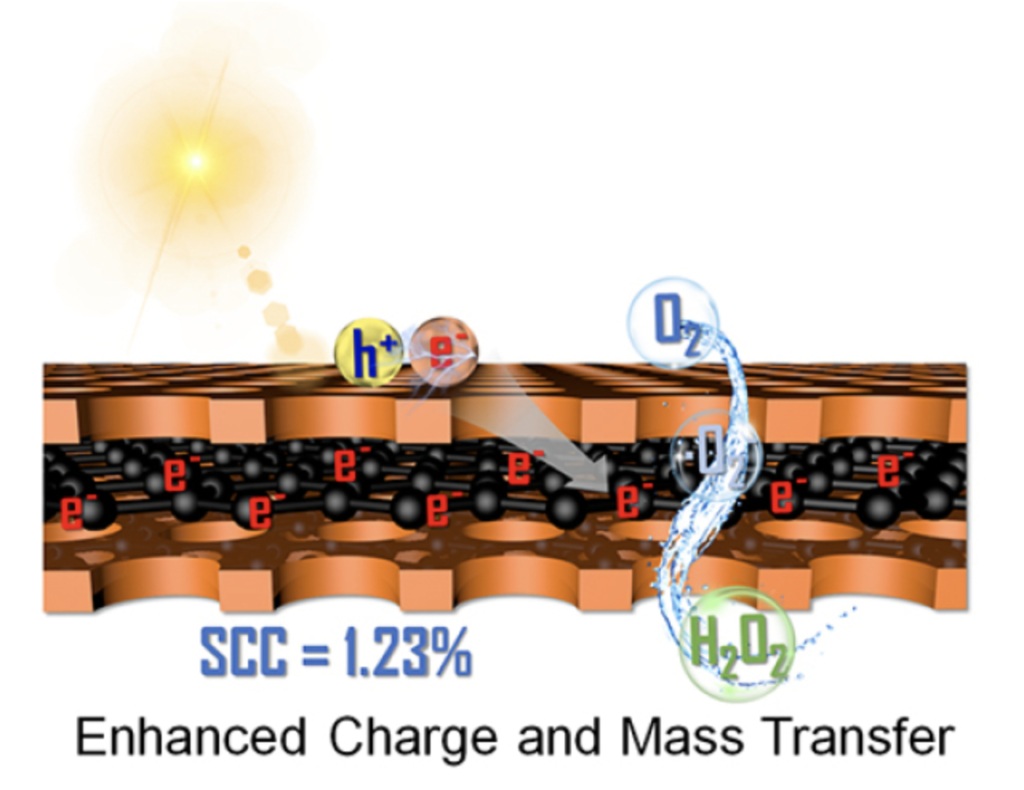https://onlinelibrary.wiley.com/doi/10.1002/adfm.202213173
https://www.cas.cn/syky/202303/t20230314_4880040.shtml
Two teams from CAS Dalian Institute of Chemical Physics and the University of Queensland, Australia, have made progress on artificial photosynthesis of hydrogen peroxide (H2O2) by simulating the stomatal structure of plant leaves , resulting in a solar-to-chemical (SCC) conversion rate of 1.23%.
The collaborative team grew two-dimensional mesoporous resorcinol-formaldehyde (RF) resin on the surface of reduced graphene oxide (rGO) through a micelle-mediated interfacial self-assembly strategy, forming a sandwich structure of RF resin-rGO-RF resin. The mesoporous channels in the material are like the stomata of plant leaves and can effectively enhance the mass transfer capability of the material.
Graph: Efficient photocatalytic production of hydrogen peroxide by simulating leaf structure, © Dalian Institute of Chemical Technology and others


